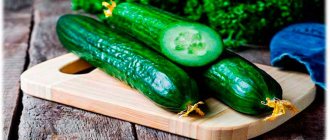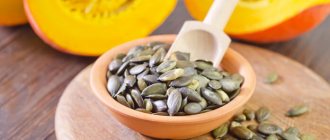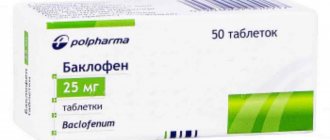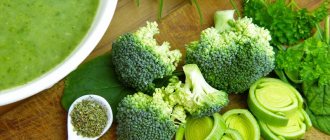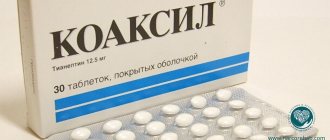Salt is also known as sodium chloride (NaCl), which is 40% sodium and 60% chlorine, these two minerals have different functions in our body.
There are many different types of salt, such as table salt, Himalayan pink, sea salt, kosher salt, rock salt, black salt and many more. This salt differs in taste, texture and color. The difference in composition is insignificant, mainly 97% sodium chloride.
Some salts may contain small amounts of zinc, calcium, selenium, potassium, copper, iron, phosphorus, magnesium and zinc. Iodine is often added to it. From time immemorial, salt has been used to preserve food. A large amount of this seasoning inhibits the growth of putrefactive bacteria, which causes food to spoil. Salt is extracted mainly in two ways: from salt mines or by evaporation. When evaporated, the mineral-rich brine is dehydrated, and when extracted from mines, the salt is purified and crushed into small fractions.
Regular table salt undergoes significant processing: it is highly crushed and purified of impurities and minerals. The problem is that the crushed salt clumps together. Therefore, various substances are added to it - anti-caking agents, for example, food emulsifier E536, potassium ferrocyanide, which is harmful to health. Unscrupulous manufacturers do not indicate this substance in the composition on the label. But its presence can be determined by its bitter taste.
Sea salt is obtained by evaporation and purification of sea water. Its composition is very similar to ordinary salt, the difference is only in a small amount of minerals. Note! Since sea waters are heavily polluted with heavy metals, they may also be present in sea salt.
Sodium is a key electrolyte in our body. Many foods contain small amounts of sodium, but most of it is in salt. Salt is not only the largest dietary source of sodium, but also a flavor enhancer. Sodium binds water in the body and maintains the correct balance of intracellular and intercellular fluids. It is also an electrically charged molecule that, along with potassium, helps maintain electrical gradients across cell membranes, that is, regulates ion exchange processes in the body's cells. Sodium plays an important role in many processes, for example, it is involved in the transmission of nerve signals, muscle contraction, and hormone secretion. The body cannot function without this chemical element.
The more sodium in our bloodstream, the more water it binds. Therefore, blood pressure increases (the heart must work harder to push blood throughout the body) and tension in the arteries and various organs increases. High blood pressure (hypertension) is a major risk factor for many serious illnesses, such as strokes, kidney failure, and cardiovascular disease.
Classification
Today there are many varieties of salt, which differ in color, taste, chemical composition, as well as the degree of grinding and purification. It’s easy to get confused among the wide range. Which one should you prefer?
Types of salt:
- Iodized. Useful for people living in environmentally unfavorable areas. Contraindicated in case of overactive thyroid gland.
- Extra. It is an “aggressive” type of salt, since it contains exclusively pure sodium chloride. During the production process of the product (evaporation of water, cleaning with soda) all useful microelements are destroyed, so it is practically of no value to the human body.
- Stone. This is a natural grayish salt extracted from mines.
- Black. It is a natural, unrefined product. Improves digestion and has a laxative effect. Black salt contains potassium, iodine, sulfur, and iron.
- Cooked. It is essentially bleached rock salt, in granules.
- Marine. The most useful product, a natural source of microelements. Its composition includes: sodium, chlorine, calcium, potassium, phosphorus, magnesium, manganese, zinc, iron, selenium, copper, silicon, iodine [5].
Sea salt is extracted from the planet's waters. It is much healthier than stone or cooking. Its color (gray, pink, black, red) and taste (rich, mild or pungent) are determined by local algae and clay species concentrated in evaporation ponds. Used to treat sinusitis, pneumonia, periodontal disease, hypertension, rheumatism, and poisoning.
According to the place of extraction, the following subspecies of sea salt are distinguished: “Maldon” (England), “Terre de Sel” and “Sel gris” (France), “Rose” (Bolivia), “Himalayan” (Pakistan), “Hawaiian red” or “ Hawaiian black”, “Kala namak” (India), “Persian blue” (Iran).
- Dietary. A distinctive feature of this type is its low sodium content. Dietary salt contains potassium and magnesium, which support the functioning of the heart and blood vessels.
Salt is classified according to grinding method (coarse, medium, fine), purity (highest, first, second grade).
The product is actively used in the food industry, medicine, and cosmetology.
In cooking, coarse salt is used exclusively for canning vegetables, salting fish, and preparing soups and cereals. Medium grinding is used to improve the taste of marinade, dry salting of meat, and baking fish. Fine salt is added to prepared dishes (snacks, salads) and served. It dissolves quickly and does not squeak on the teeth.
The greatest value for the human body is sea salt, extracted from inland seas and salt lakes.
Let's consider what is unique about this gift of nature.
Composition of the drug
To increase the weight of the drug in order to make more money, drug dealers may add various drugs with a similar external structure. But the salts are always based on synthetic cathinones, these can be:
- mephedrone derivatives and mephedrone itself;
- methylone and its analogues;
- Pipradol.
Drug manufacturers can add any other substances, since salt is the name for psychostimulants that were sold as bath salts. Methamphetamine or dexamphetamine may be sold in the same way.
Due to the large abundance of drugs, it is impossible to say exactly what is sold most often. But the important thing is that if a person is caught by law enforcement agencies, then the punishment for the drug addict will depend on the composition and active ingredients.
All types of drug addiction
Drug addiction treatment
More details
Female, age, beer
Treatment of alcoholism
More details
The importance of sea salt for the body
Salt extracted from the depths of the sea has unique qualities. In laboratory conditions, scientists have still not been able to derive its analogue, despite the fact that the composition of the crystal has long been known. Esotericists claim that salt obtained from sea water has great natural energy, which fills the human body with harmony and health [6].
From time immemorial, sodium chloride has been used as a natural preservative that increases the shelf life of products. Based on it, compositions were prepared to prolong youth and beauty.
The beneficial properties of sodium chloride are due to the presence of sodium, potassium, calcium, bromine, magnesium, iodine, zinc, silicon and iron in the composition [6].
The effect of salt on the human body:
- regulates and maintains water balance and sodium-potassium ion exchange within normal limits;
- relieves spasms of smooth muscles;
- supplies the body with macro- and microelements, in particular sodium;
- calms the nervous system;
- promotes the synthesis of hydrochloric acid;
- inhibits putrefactive processes in the gastrointestinal tract (due to antiseptic properties);
- speeds up metabolism;
- promotes the formation of cell membranes and the formation of red blood cells;
- supports normal hormonal and lipid metabolism, the function of the sex glands;
- improves the condition of the skin.
Salt acts as an antiallergic and disinfectant agent. It is useful not only to consume it internally, but also to use it externally as baths, inhalations, and as part of masks. Thus, salt compresses under the eyes relieve bags, rinses with the addition of soda relieve inflammation of the tonsils, and baths relieve swelling of the legs [6][7].
General information
Salt drug is a type of substance with a psychostimulant effect. These substances received this name because they were distributed via the Internet under the guise of bath salts. Most often, the salts contain mephedrone, but impurities of other substances with a similar effect are also possible.
The drug was promoted under the guise that it was safer than others, but it turned out that dependence on salts can occur after just a few weeks of regular use.
Salts became very popular in the early 2000s. Their production does not require many reagents and just basic knowledge of chemistry. Because of this, salts are very cheap. They are even used by heroin and crack addicts as a temporary substitute.
The structure of the salts is designed so that the drug is poorly metabolized and can remain in the body for up to 5 days. If used regularly, the elimination period is extended to 12-14 days.
Methods for treating diseases with salt
When the first symptoms of illness appear, do not rush to go to the pharmacy; you can improve your condition using traditional methods, without the use of synthetic products.
Sea salt has antibacterial, antiseptic, and wound-healing effects. It is used to prepare solutions for washing the nasal passages, gargling, baths, and inhalations. It is a natural disinfectant, anti-inflammatory agent that fights ARVI diseases, colds, rheumatism, arthrosis, and neutralizes radiation [6][7].
Salt treatment methods:
- Inhalations. Prescribed for the prevention and treatment of respiratory diseases, they have a general strengthening value. The principle of operation of the procedure is based on the fact that with the inhalation of medicinal steam, beneficial substances enter the lungs, which kill painful microorganisms, disinfect the mucous membranes of the larynx and nasopharynx, relieve swelling, thin sputum, and saturate the tissues with biologically active compounds. As a result, the patient’s well-being improves, and the disease recedes faster [6][7].
Inhalations with sea salt have anti-inflammatory, antiseptic effects, and are useful for a runny nose and cough.
To enhance the effect, add pine extract, nettle, eucalyptus, sage or linden blossom to the teapot. Such inhalations are carried out 2 times a day.
To prepare therapeutic steam, dissolve 30 grams of sea salt in a liter of water. Bring the resulting mixture to a boil, cook for 5 minutes. Breathe this solution for 10 minutes. To eliminate problems with the upper respiratory tract, inhale through your mouth, exhale through your nose; to treat diseases of the nasopharynx, do the opposite procedure.
Inhalations are contraindicated for hypertensive patients, people with heart and pulmonary insufficiency, nosebleeds, elevated body temperature, and children under 2 years of age.
After the procedure, you should not strain your throat, go out into the cold air, it is advisable to lie down for 30 minutes.
- Rinsing the nasal cavity, gargling. Symptoms of colds, sinusitis, tonsillitis, tonsillitis, sinusitis, rhinitis recede if the mucous membranes are disinfected with saline solution. This is the safest and most effective way to cleanse the nasal passages of pathogenic mucus. Salt rinsing increases local immunity, removes microparticles of irritants (bacteria, pollen, dust), strengthens capillaries, reduces swelling of the mucous membrane, and accelerates recovery. A solution with sodium chloride reduces inflammatory reactions and reduces the likelihood of infection of the body [6][7].
Method for preparing a disinfectant for rinsing the nasal passages and gargling: dissolve 7 - 10 grams of sea salt without additives in 500 milliliters of hot water. Cool the solution to an acceptable temperature (it should be warm). Perform the procedure 3 – 5 times a day.
Remember, using a cold saline solution to gargle or rinse your nose is unacceptable, as it can worsen the patient's condition.
Sea bath. Medicinal properties: relieves rheumatoid spasms, restores mobility and flexibility of joints, relieves osteochondrosis, skin diseases (psoriasis, neurodermatitis, vitiligo, eczema). Hot baths with water temperatures up to 42 degrees are effective for arthritis, neuropsychiatric disorders, liver and kidney pathologies. The course of treatment is 10–15 procedures, lasting 15 minutes, daily or every other day. Contraindications: diseases of the cardiovascular system [6][7].
Preparing a bath: dial water to 35 degrees, dissolve 1.5 kilograms of sea salt. Lie down with your legs slightly higher than your head (this will ease the work of your heart). Procedures should be carried out in the evening no later than 1 hour before bedtime.
To relieve nervous tension, add aromatic oil of chamomile, lavender or lemon balm (a few drops) to your bath.
Why is salt called "white death"?
This term refers to regular table salt. This product is completely refined and devoid of beneficial properties. Therefore, for internal and external use, it is recommended to use exclusively sea salt enriched with microelements. During the production process, it is not subjected to heat treatment, so the product retains maximum nutrients in its composition [8].
Severe intoxication
Life-threatening poisoning from an overdose of “salt” itself manifests itself as follows:
- severe chest pain;
- a feeling of the heart “jumping out”, tachycardia and arrhythmia;
- difficulty breathing;
- pulsation of the arteries in the temples, severe headache;
- redness of the eyes;
- high temperature up to 40-42 degrees;
- severe panic, fear of death;
- auditory and tactile hallucinations.
When such symptoms appear, the only correct way out is to urgently call a doctor. Before his arrival, you can do the following:
- wipe the body with cold water;
- to reduce blood pressure, take an antihypertensive drug;
- relieve spasms and pain by taking antispasmodics (“No-shpa”, “Spazmalgon”);
- Use the liquid only if the pressure decreases; it is necessary for detoxification and to prevent dehydration;
- lay on a hard surface and turn your head to one side to prevent aspiration of vomit into the respiratory tract.
Important! Do not use strong antihypertensive drugs; a sharp decrease in blood pressure will lead to loss of consciousness. Antipyretics will not help either; a more effective method in this case is cool rubbing.
Lack of professional help in case of severe overdose of “salt” results in liver or kidney failure, rhabdomyolysis and death. There are many cases described in which a person commits suicide after taking a large amount of a stimulant.
Excess salt in the body
Interestingly, sea salt consists of 97% sodium chloride, and the remaining part (3%) consists of mineral compounds necessary for human life.
Sodium normalizes kidney function, maintains normal water-salt balance, neuromuscular activity, participates in muscle contraction, and transport of blood sugar into cells. Without this element, the growth of the body and the normal functioning of internal organs are impossible [9][10].
By interacting with chlorine, sodium prevents the leakage of fluid from blood vessels into nearby tissues. It is impossible to overestimate the role of this element for a living organism [9][10].
In a healthy person, the sodium content in the blood ranges from 135 to 145 millimoles per liter. A shift in this balance up or down indicates the presence of “hidden” problems in the body [9][10].
With prolonged excess salt consumption (over 10–15 grams per day), hypernatremia develops, accompanied by cellular dehydration [10].
Other causes of sodium accumulation in the body:
- diabetes mellitus type 2;
- hypertension;
- unhealthy diet (uncontrolled consumption of fast food, processed foods);
- hereditary predisposition;
- insufficient amount of water consumed (less than 1.5 liters per day);
- taking mineral preparations;
- violation of water-salt metabolism;
- dysfunction of the adrenal glands and kidneys [10].
Symptoms of excess:
- fluid retention in the body (edema);
- increased body temperature;
- excessive excitability;
- decreased kidney function;
- constant thirst;
- lethargy, loss of strength;
- constipation;
- joint pain;
- dark yellow urine;
- frequent headaches;
- muscle cramps;
- motor restlessness;
- arterial hypertension [10].
Consequences:
- muscle fibers are stretched, their function is weakened (response to impulses worsens);
- renal failure, nephritis, inflammation of the canals develops;
- the blood thickens, the pulse quickens, chronic hypertension appears;
- the risk of stroke and heart attack increases;
- arrhythmia and tachycardia develop;
- fatty deposits (plaques) appear on the walls of blood vessels;
- The regulatory function of the hypothalamus decreases [10].
To eliminate the symptoms of hypernatremia and improve the patient’s condition, the amount of salt consumed should be strictly controlled and reduced to a critical minimum of 3–5 grams per day. In addition, a strict diet, medication, and outpatient treatment are prescribed. The goal of therapy is enhanced elimination and blocking of salt deposition [10].
Remember, self-medication is dangerous to health. Therapy is prescribed by a doctor after drawing up a clinical picture of the patient’s health.
Feelings of an addict
The consumption of “salt” often occurs over several hours or several days in a row. A person enters a so-called “marathon” with a constant high level of the drug in the blood. This condition is accompanied by constant overstrain of the nervous system and leads to its complete exhaustion. This type of psychoactive drug tends to accumulate in the body, so with each dose the likelihood of an overdose increases.
Intoxication leads to a lack of adequate perception of the world and loss of the sense of self-preservation. There are many cases described when lovers of “bath salts” simply jump out of a window or get run over by a car. Adverse effects are exacerbated by concomitant use of alcohol or other potent compounds. Changes in mental status and inappropriate behavior in a salt addict persist for several days, even after the start of therapy.
Shortage
Causes of hyponatremia:
- insufficient intake of salt from food (less than 0.5 grams);
- liver cirrhosis with ascites;
- polycystic kidney disease;
- pyelonephritis;
- decompensated diabetes mellitus;
- chronic renal failure;
- nephrotic syndrome;
- diseases of the digestive tract;
- taking diuretics;
- hypersecretion of antidiuretic hormone [9].
Symptoms of deficiency:
- decreased skin turgor;
- dry dermis;
- leg cramps;
- vomit;
- thirst;
- decreased urine output;
- nausea;
- confusion, hallucinations;
- loss of appetite;
- drowsiness and apathy;
- weight loss;
- muscle weakness;
- frequent infectious diseases
- decrease in blood pressure [9].
Consequences:
- depression;
- deterioration of food digestion;
- decrease in blood plasma volume;
- leaching salt from bones;
- increased accumulation of harmful nitrogen compounds that undermine health;
- dysfunction of the vestibular apparatus [9].
Treatment of hyponatremia involves the use of medications and foods containing sodium.
Food sources: sea salt, sauerkraut, brines, broths, soy sauce, canned meat, tomatoes, celery, eggs, fish and seafood.
Consequences of long-term use
Among the late signs of “salt” consumption, further progression of nervous system disorders should be noted. Typical symptoms of such a drug addict are:
- intellectual impoverishment;
- lack of ability to concentrate on one thing;
- inability to concentrate;
- violation of memorization and logical thinking;
- sleep disturbance.
The drug addict becomes uncontrollable, he constantly gets irritated over trifles and shows unmotivated aggressiveness. Sometimes there is paranoia. All organs are gradually destroyed.
Important! If a person does not undergo treatment, his life expectancy does not exceed 5-6 years.
Get help now
Do any of your relatives or friends have an addiction? Have you tried in every possible way to help, but as a result the person still returned to his past life?
You are not the first to encounter this problem, and we can help you.
We guarantee anonymity, we will persuade you to undergo treatment, and we will help you choose a center.
Call us
8
or
Call me
Myths about salt
Disputes about the benefits and harms of sodium chloride have arisen since ancient times, and do not subside to this day. Some argue about the need to reduce daily salt intake to a minimum. Others, on the contrary, call for including a flavoring additive in the daily diet so as not to “injure” the body.
Myth No. 1 “Salt is poison”
It is not true. Sodium chloride is the most valuable gift of nature, which a few centuries ago was worth its weight in gold. The benefits of salt for the human body are invaluable. Its chronic deficiency can be fatal. Chlorine and sodium included in the product are involved in vital functions: transmission of nerve impulses, transport of oxygen in the blood, and muscle movements.
In moderate quantities, not exceeding the daily requirement, salt is a product that supports human health. However, if consumed excessively, its benefits turn into harm. In this case, the expression “salt is white poison” is completely justified, since hypernatremia can literally kill a person [1].
Myth No. 2 “Diet without salt”
Currently, there is an erroneous assumption that by refusing to take sodium chloride, a person begins to lose kilograms due to the breakdown of fat. This is partly true. A salt-free diet will help you lose up to 4 kilograms in 14 days. However, in this case, weight loss occurs not due to the breakdown of fat deposits, but as a result of dehydration of the body. Along with the liquid, minerals (calcium, potassium, magnesium) are washed out, the deficiency of which leads to an imbalance in the electrolyte balance in the body. As a result, a person experiences rapid fatigue, dry hair and skin, and loss of strength.
A lack of salt in the body is accompanied by the development of diseases of the cardiovascular system, depression, osteoporosis and anorexia.
You cannot completely stop using sodium chloride, as this will lead to poor health.
Today, nutritionists agree that a salt-free diet will do more harm to the human body than good [9].
Myth No. 3 “Salt deposition”
Bile salts, calcium, phosphates, and urates are often deposited in the human body. This group of chemical compounds has nothing to do with sodium chloride. The most important aspect is the ratio of the amount of salt consumed and excreted. It is interesting that to maintain life, the human body absorbs only the missing part of sodium chloride. At the same time, the excess is excreted in the urine. If there is a metabolic disorder, salts begin to accumulate in the gallbladder, joints, and kidneys. As a result, the outflow of bile is disrupted, severe pain occurs, cartilage is destroyed, the pelvis becomes inflamed, and stones form.
Thus, when it comes to salts, we do not mean sodium chloride, but the content of chemical compounds in tissues [11].
Myth No. 4 “Destroys teeth”
True, sea salt, if you chew its crystals, can damage the enamel. In other cases, this statement is nothing more than erroneous. Salt is eaten exclusively in dissolved form, in which it cannot harm the teeth. On the contrary, it, together with soda, is used to treat mouth ulcers and strengthen gums [12].
Myth No. 5 “Increases blood pressure”
Excess salt in the body causes the development of atherosclerosis and negatively affects the mechanism that controls blood pressure. In addition, with excessive consumption of sodium chloride, the need for fluid increases sharply, which leads to increased stress on the heart and blood vessels. As a result, swelling of the limbs is observed, and bags appear under the eyes. Therefore, hypertensive patients are recommended to reduce the daily dose of salt [13].
Signs of a drug addict
It is not difficult to suspect that your loved one has become a drug addict, but it is impossible to determine exactly which drug he is using without testing. The same applies to salts.
To understand that a person is using psychostimulants, you need to pay attention to his daily routine, friends, finances and behavior.
Usually salt addicts sleep little at night, constantly disappear for 1-2 days, after which they return home and sleep for 12-15 hours. After waking up, they eat a lot. Despite their increased appetite, they are usually thin, since they eat only once every 1-2 days.
If new friends appear with characteristic fast speech, jumping ideas and “running” eyes, this may be a sign of the beginning of the use of psychostimulants. People usually start taking these substances in company or at parties. Take alone only in cases of severe dependence.
Salt addicts quickly run out of money because they usually don’t work anywhere. Due to financial need, they begin to steal valuables, money from the house, and may even go so far as to steal household appliances. If they can’t steal houses, they switch to others, and they can go to jail for this.
Salts are usually consumed intranasally (through the nose). Because of this, drug addicts develop a characteristic nose sniffing in the first few hours after taking it. They drink a lot of liquids, coffee or energy drinks.
Such people may have bags of drug residue, bottles or cans of energy drinks in their room.
Taken together, these signs may indicate addiction. The sooner testing is carried out and a drug addict is referred for treatment to specialized centers, the greater the chances of returning him to normal life.
Useful on the farm
Sodium chloride is used in everyday life for the following purposes:
- so that the shells on the eggs do not crack during cooking (add to water);
- so that the cookies do not burn in the oven (pour them under the molds);
- to prevent bugs from getting into jars of cereals (put a bag of salt at the bottom of the container);
- to remove greasy stains from clothes (rub with salt);
- to eliminate the smell of mud from fish (rinse in a saturated saline solution);
- so that colored linen does not fade during washing (add to water);
- so that the first pancake does not come out “lumpy” (wipe the pan);
- so that dry mushrooms regain their former appearance (soak in salted milk);
- so that wet firewood flares up faster (sprinkle with crystals);
- to give softness to terry robes and towels (after washing, rinse in water with added salt).
Benefit of restrictions
It is known that reducing salt intake by just 3 g per day reduces the risk of stroke by 22%, heart attack by 34%, and blood pressure approaches normal (“gain” is on average 11.5 mm Hg).
A cook in love, or How to fix an over-salted dish Read more
Salt as a beauty product
Sodium chloride has a beneficial effect on nails, skin, and hair. Sea salt is used in beauty salons for scrubs, peelings, baths, anti-cellulite products, compresses and masks. Procedures based on sodium chloride relieve inflammation, normalize the skin's fat balance, cleanse the dermis and make it more elastic.
Beauty recipes at home
"Bath of Aphrodite"
Relieves tension, soothes sensitive and irritated skin, rejuvenates.
Method of preparing a bath: dissolve 500 grams of sea salt in warm water, add 200 grams of dried seaweed, 50 milliliters of honey and 500 milliliters of milk. The procedure is carried out every other day, 10 sessions.
Body Scrub
Cleanses the skin, removes impurities and dead cells from its surface.
To prepare the scrub, mix 15 grams of coffee grounds, finely ground sea salt, a few drops of essential oil and 15 milliliters of natural oil (sesame, grape seed, olive, almond). Apply the resulting mixture onto the body with gentle massage movements, rinse with warm water.
Anti-cellulite product
Gets rid of orange peel, nourishes and tightens the dermis, improves blood circulation. The active components of the product have good penetrating ability and help remove fat from the deep layers of the skin. However, eliminating cellulite requires an integrated approach, including undergoing tightening procedures, performing physical exercises, and following a therapeutic diet.
To prepare a fat-burning product, mix medium-ground sea salt with thick honey until the consistency of a homogeneous paste. Apply the anti-cellulite composition to the problem area with light massage movements. Pat the smeared areas until the product liquefies on them. Rinse off with warm water.
To smooth the dermis and burn fat deposits in the subcutaneous tissue, repeat the procedure every other day until a lasting result appears.
To enhance the effect, add grapefruit oil (a few drops) to the honey-salt mixture.
Bath to strengthen the nail plate
To prepare a saline solution, dissolve 30 grams of soda and 30 grams of sodium chloride in 250 milliliters of warm water. Immerse your nails in the bath for 15 minutes, do not rinse. Perform this procedure daily for 14 days, before going to bed. This way the salt will “work all night”.
Sodium chloride strengthens the nail plate, makes it elastic and dense, and also saturates it with useful minerals. Thanks to this, it stops exfoliating, crumbling, breaking, and growth accelerates.
Facial peeling
Removes “blackheads”, has a whitening effect, suitable for combination and oily skin types.
To prepare the peeling, mix the following ingredients: cream (15 milliliters), finely ground sea salt (30 grams), cottage cheese (15 grams). Apply the mask to your face, rub it for 30 seconds with massage movements. Rinse your skin with warm, then cool water.
For those with very oily skin, it is recommended to add an additional ingredient to the composition - baking soda (5 grams).
Compress for varicose veins
According to statistical data from the surgery department of the Russian National Research Medical University named after. N.I. Pirogov, more than 50% of the world’s population suffers from swelling of peripheral veins under the skin. As a result, the movement of blood through the vessels worsens, nodes form, and the valve apparatus is destroyed. The veins begin to experience pressure, swell, ache, become tortuous, and become bluish in color. The vessels stretch, and characteristic “cobwebs” form. The main factor in the appearance of pathology is insufficient development of connective tissue.
Symptoms of varicose veins: heaviness in the legs, pain, cramps, swelling of soft tissues, burning in the veins, lumps on the shins, change in skin color. If the disease is not treated in time, the changes spread further, the following are observed: trophic ulcers, pigmentation, induration, phlebothrombosis, malnutrition of the dermis, rarely - fever, weakness, bleeding when nodes rupture.
A compress for varicose veins has warming properties, relieves pain and eases overall well-being.
Method of preparation: dissolve sea salt in warm water in a ratio of 1:1, cool. Soak gauze in the resulting solution, apply to the problem area, and secure with an elastic bandage. After the procedure, rub the treated area.
For hair
Sea salt stimulates the hair follicles, enhances the growth of curls, normalizes the functioning of the sebaceous glands, relieving the scalp of dandruff and excess oil.
In addition, sodium chloride stimulates blood circulation, cleanses the dermis of dead cells, improves hair nutrition in the root zone, prevents strands from falling out, and improves their structure.
Sea salt is rubbed into the scalp or used to make masks. In the first case, finely ground powder is applied with massaging movements to clean, damp hair for 15 minutes, then rinsed thoroughly and dried naturally. To strengthen the structure of medium-length hair, you will need 30–50 grams of sodium chloride.
A salt-based hair mask is more gentle on the scalp. Ingredients: 30 milliliters of yogurt or kefir, 30 grams of sodium chloride. To nourish the scalp, you can add honey, eggs, and essential oils. The ingredients are mixed, applied to the roots of the hair, distributed over the entire length. The head is wrapped in a plastic bag. Leave the mask on for half an hour. Wash off with shampoo. Do not blow dry.
To avoid discomfort and pain, “salt” procedures are carried out only when there are no injuries or scratches on the scalp. The course of therapy is 21–28 days, no more than 2 times a week. If necessary, repeat the procedure after 2–3 months.
With frequent use of salt masks, your hair will lose its lightness and elasticity, become stiff and unruly, so do not overuse it.
Remember, the effectiveness of the procedures depends on the regularity of implementation, strict adherence to proportions in the process of preparing the medicinal composition and the rules of application.
Traditional beauty recipes with salt are much safer and will bring more benefits than products with chemical dyes and flavors.
Salt substitutes
This type of product is perhaps the most ancient. Adyghe, Svan, Abkhaz salt are all salt substitutes. In them, the salty taste was partially replaced by others, most often by the taste of spices. That is, if very roughly, it is a salty seasoning.
The reason for its occurrence is utilitarian: salt was expensive, so they decided to add traditional spices in order to reduce the cost of the product. In Rus' they made black salt, and in Adygea, for example, they pressed garlic into the salt, left it to dry, and then added various spices.
Attention! Self-medication is unacceptable. If you have any health problems, you should consult a doctor.
Harm and contraindications
Sodium chloride turns into a poison for the body if there is an excess of the product in the daily diet. Exceeding the daily norm is fraught with vision problems, poisoning, and nervous disorders.
Contraindications:
- tuberculosis;
- renal failure;
- glaucoma;
- venereal diseases;
- hypertonic disease;
- acute infectious diseases;
- swelling;
- stomach ulcer.
In the presence of these pathologies, the human body is not able to cope with the processing of sodium chloride. As a result, the benefit of the product turns into harm: the course of the disease and general health worsen, which reduces performance and limits its vital activity [1][2][3].
Historical facts
The mephedrone formula (salt base) was already known in the first half of the 20th century, but during the time of legal cocaine, no one paid attention to such substances.
In the 2000s, Chinese drug dealers entered the drug market and pioneered the production and distribution of salts. The main sales platform was the Internet. At that time, you could buy salts and spices on a regular website, and no one took any action.
Only after cases of death from salt overdose began to be documented, these substances were officially banned from distribution.
An interesting fact is that the spread of salts began in Europe, and not in the CIS countries. This may have been due to the widespread use of the Internet and the ability to easily purchase drugs. According to statistics, for the first 10 years of the 21st century, salts were taken at every second party that took place in Europe.
After the drug was banned, the demand for it increased, the price increased slightly, as it became more dangerous to trade it. The sentence for distributing and manufacturing synthetic psychostimulants based on mephedrone or analogues can reach up to 8 years in prison.
